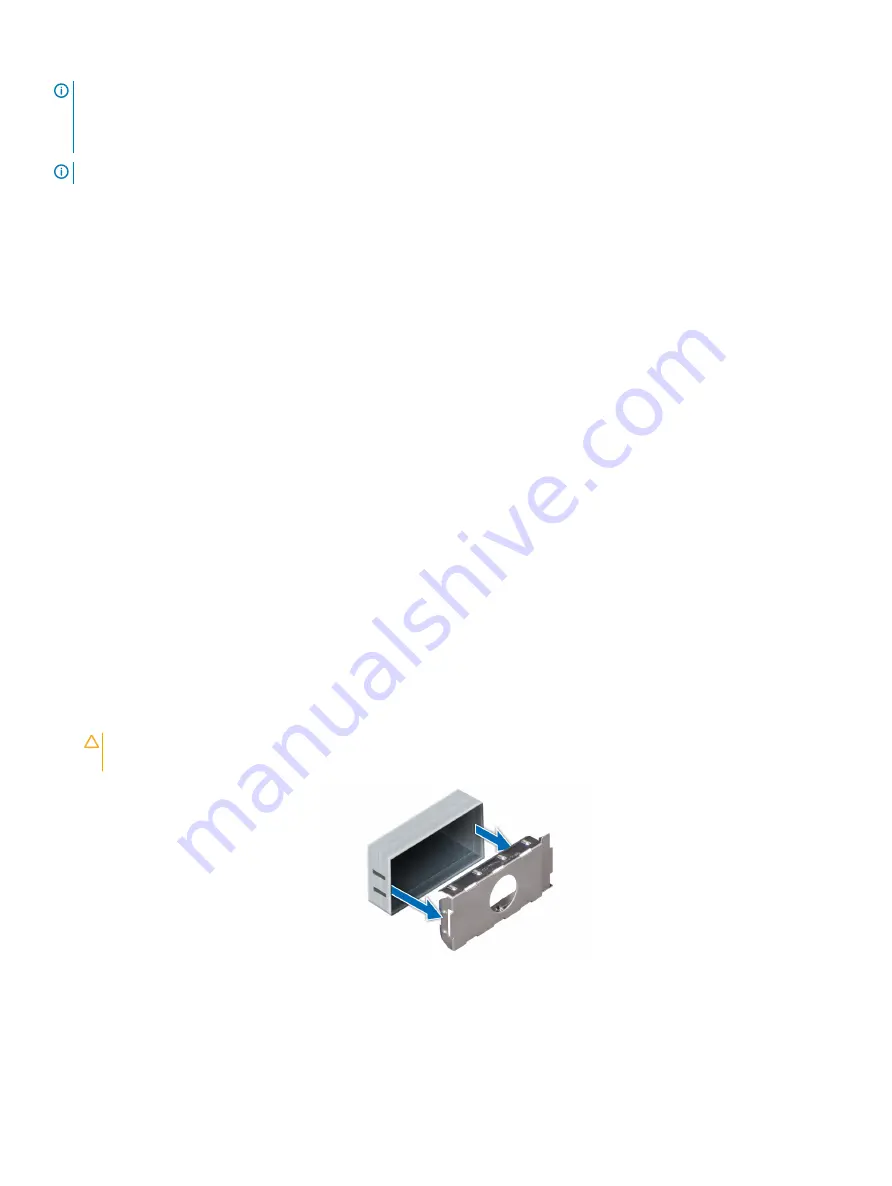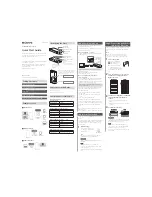
NOTE:
When two identical PSUs are installed, power supply redundancy (1+1 – with redundancy or 2+0 – without redundancy) is
configured in system BIOS. In redundant mode, power is supplied to the system equally from both PSUs when Hot Spare is
disabled. When Hot Spare is enabled, one of the PSUs is put into the sleep mode when system utilization is low in order to
maximize efficiency.
NOTE:
If two PSUs are used, they must be of the same maximum output power.
Hot spare feature
Your system supports the hot spare feature that significantly reduces the power overhead associated with power supply unit (PSU)
redundancy.
When the hot spare feature is enabled, one of the redundant PSUs is switched to the sleep state. The active PSU supports 100 percent of
the system load, thus operating at higher efficiency. The PSU in the sleep state monitors output voltage of the active PSU. If the output
voltage of the active PSU drops, the PSU in the sleep state returns to an active output state.
If having both PSUs active is more efficient than having one PSU in the sleep state, the active PSU can also activate the sleeping PSU.
The default PSU settings are as follows:
•
If the load on the active PSU is more than 50 percent of PSU rated power wattage, then the redundant PSU is switched to the active
state.
•
If the load on the active PSU falls below 20 percent of PSU rated power wattage, then the redundant PSU is switched to the sleep
state.
You can configure the hot spare feature by using the iDRAC settings. For more information, see the iDRAC User’s Guide available at
Removing a power supply unit blank
Prerequisite
Follow the safety guidelines listed in
Step
If you are installing a second power supply unit (PSU), remove the PSU blank in the bay by pulling the blank outward.
CAUTION:
To ensure proper system cooling, the PSU blank must be installed in the second PSU bay in a non-redundant
configuration. Remove the PSU blank only if you are installing a second PSU.
Figure 127. Removing a power supply unit blank
Next step
.
170
Installing and removing system components
Содержание PowerEdge R740
Страница 9: ...Figure 1 Supported configurations PowerEdge R740 system overview 9 ...
Страница 27: ...Figure 20 Jumper setting and memory information Figure 21 system task PowerEdge R740 system overview 27 ...
Страница 28: ...Figure 22 NVDIMM battery and mid tray hard drives 28 PowerEdge R740 system overview ...
Страница 141: ...Figure 94 Securing GPU 1 Installing and removing system components 141 ...
Страница 142: ...Figure 95 Installing GPU 2 and 3 142 Installing and removing system components ...















































